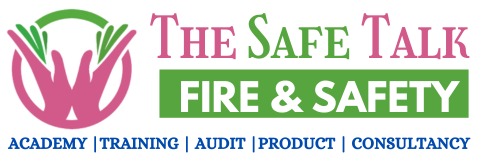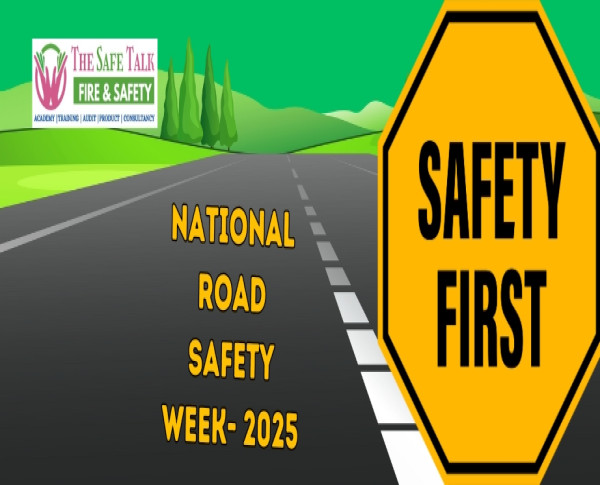National Road Safety Week -2025
National Road Safety Week reminds everyone every year of the safe driving practices needed. The campaign, in tandem with the goals of the National Highway Traffic Administration (NHTSA), helps to raise awareness about road safety measures and the alarming rate at which traffic accidents are happening. One of the major causes of these accidents is speeding, which often goes unnoticed until it's too late.
The Importance of National Road Safety Week
It's National Road Safety Week. So far, the initiative has been taking place annually. It's always a week during which drivers and pedestrians take into consideration their respective actions in order to create a much safer transportation environment. The road safety week therefore emphasizes the imperative of responsible driving, obedience to speed limits, and recognition of the horrific toll of carelessness.
Speeding has been one of the major concerns raised during the week. In fact, speeding is one of the major causes of road fatalities and severe injuries, according to statistics. The message of the campaign against speeding is basically to create a culture of responsibility and vigilance on the roads.
Knowing Your Risks
Speeding isn't just an act of overstepping speed limits; it's an act of compromising safety. Here's why speeding is so dangerous:
1. Longer Reaction Time
Due to the high speed, there is a short period to react to an unsighted obstacle like a pedestrian stepping into the road or a preceding vehicle braking suddenly. A delay of just a split second results in a catastrophic accident.
2. Greater Stopping Distance
With increasing speed, the distance to stop a vehicle also increases sharply, rendering it impossible to stop before an accident occurs in emergency situations.
3. Severe Impact in Crashes
The force of impact in a crash increases exponentially with speed. A collision at 60 mph is much more destructive than one at 30 mph, and it often kills or maims people.
4. Higher Probability of Losing Control
High-speed driving reduces the stability of a vehicle and increases the probability of losing control, especially on curves or uneven surfaces.
5. Impact on Vulnerable Road Users
Speeding threatens the safest road users-cyclists, motorcyclists, and pedestrians. They are the ones often exposed to collision forces in high-speed crashes.
Statistics in the Problem
- According to the National Highway Traffic Administration, speeding happens in nearly a third of all motor vehicle fatalities in America. Below are some statistics:
- The number of fatal crashes that involved speeding reached over 11,000 in 2021.
- It has been established that speeding increases the chances of major injury or fatality by about 20%.
- More speeding incidents are recorded in urban areas where speed limits are rarely observed.
- These statistics put into perspective why initiatives such as Traffic Safety Week need to be addressed in a bid to curb speeding dangers.
Why Do People Speed?
- Running Late: Many drivers exceed speed limits to save time, underestimating the risks involved.
- Overconfidence: Some drivers believe they can handle high speeds without losing control.
- Lack of Awareness: Not all drivers are aware of the potential consequences of speeding.
- Peer Pressure: Younger drivers, in particular, may speed to impress peers or test their limits.
- Road Design: Wide, open roads can encourage drivers to exceed speed limits unconsciously.
The Role of National Road Safety Initiatives
Initiatives such as National Road Safety Week and Traffic Safety Week can better prevent such behavior through education, enforcement, and engineering. Here's how:
1. Education and Awareness Campaigns
Public awareness campaigns highlight the dangers of speeding and promote the concept of responsible driving. Public forums in schools, working communities, and their centers help reach out to the public.
2. Enforcement of Speed Limits
Strict enforcement of speed limits through speed cameras, police patrols, and fines serves as a deterrent against speeding.
3. Engineering Safer Roads
Road design is an important factor in encouraging safe driving. Features such as speed bumps, roundabouts, and proper signage help in controlling vehicle speeds.
4. Community Involvement
Community-based initiatives encourage local participation in promoting road safety. Events such as marathons, rallies, and safety workshops are organized to engage the public.
How You Can Contribute
As a driver or pedestrian, you can contribute to the goals of National Road Safety by adopting these practices:
Follow Speed Limits: Always adhere to the posted speed limits and adjust your speed based on road and weather conditions.
Stay Focused: Avoid distractions like mobile phones while driving.
Plan Ahead: Leave early to avoid the temptation of speeding to reach your destination on time.
Be Courteous: Share the road with fellow road users and be extra courteous to the vulnerable such as pedestrians and cyclists.
Safety Advocacy: Engage in road safety events and influence your peers to adopt responsible driving behaviors.
Success Stories from Traffic Safety Week
Some communities have improved their road safety significantly during the Traffic Safety Week. For example:
Speed Enforcement Cameras: Those cities that introduce speed-enforcement cameras record 20% decrease in speeding activities.
Community Workshops: Defensive driving workshops have helped educate thousands of drivers about safe practices.
School Programs: Engaging children and teenagers through interactive sessions has instilled a culture of road safety among young drivers.
Conclusion
Such a National Road Safety Week proves to be a vital platform for taking up the cause against speeding. Together with all the associated dangers, it develops a responsible driving culture by understanding the problems and actively participating in safety initiates. Thus, we can collectively reduce traffic fatalities and make our roads much safer for everyone.
Remember, saving a few minutes by speeding may be worthwhile but is never worth the price of a life. This Traffic Safety Week, let's all vow to make better driving practices to ensure fewer accidents on the road for a brighter future.
FAQs About National Road Safety Week
-
What is National Road Safety Week?
It’s an annual event to raise awareness about road safety and reduce traffic accidents. -
When is National Road Safety Week celebrated?
It is usually observed in January, but dates may vary each year. -
Why is National Road Safety Week important?
It promotes safer driving practices, saving lives and preventing injuries. -
Who organizes National Road Safety Week in India?
The Ministry of Road Transport and Highways organizes it with support from various organizations. -
How can individuals participate in National Road Safety Week?
Attend workshops, follow traffic rules, and spread awareness about road safety.



